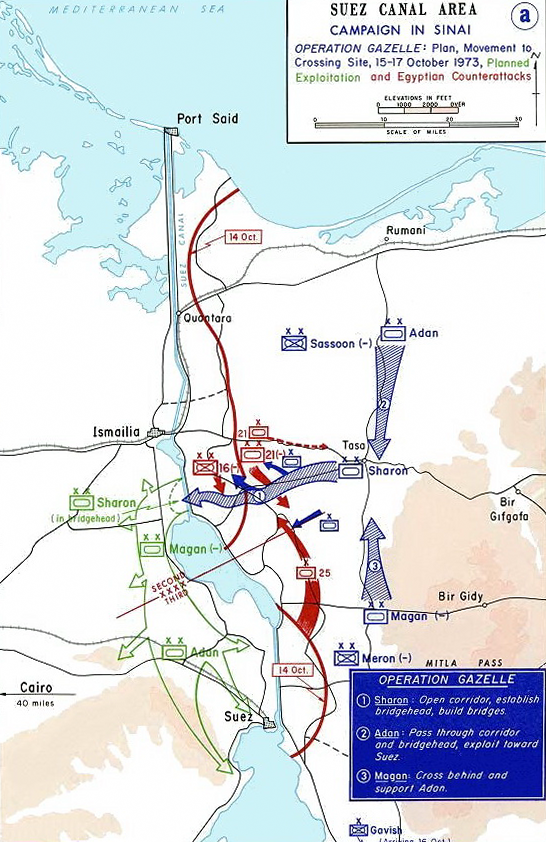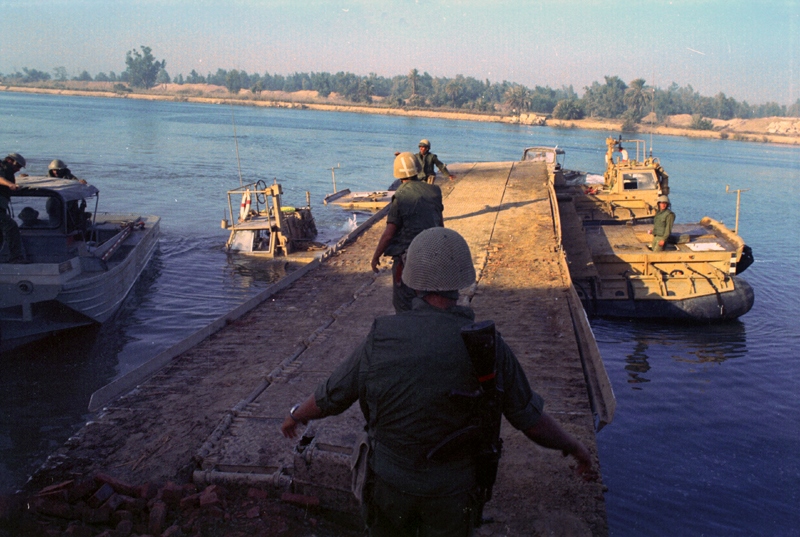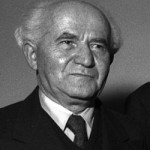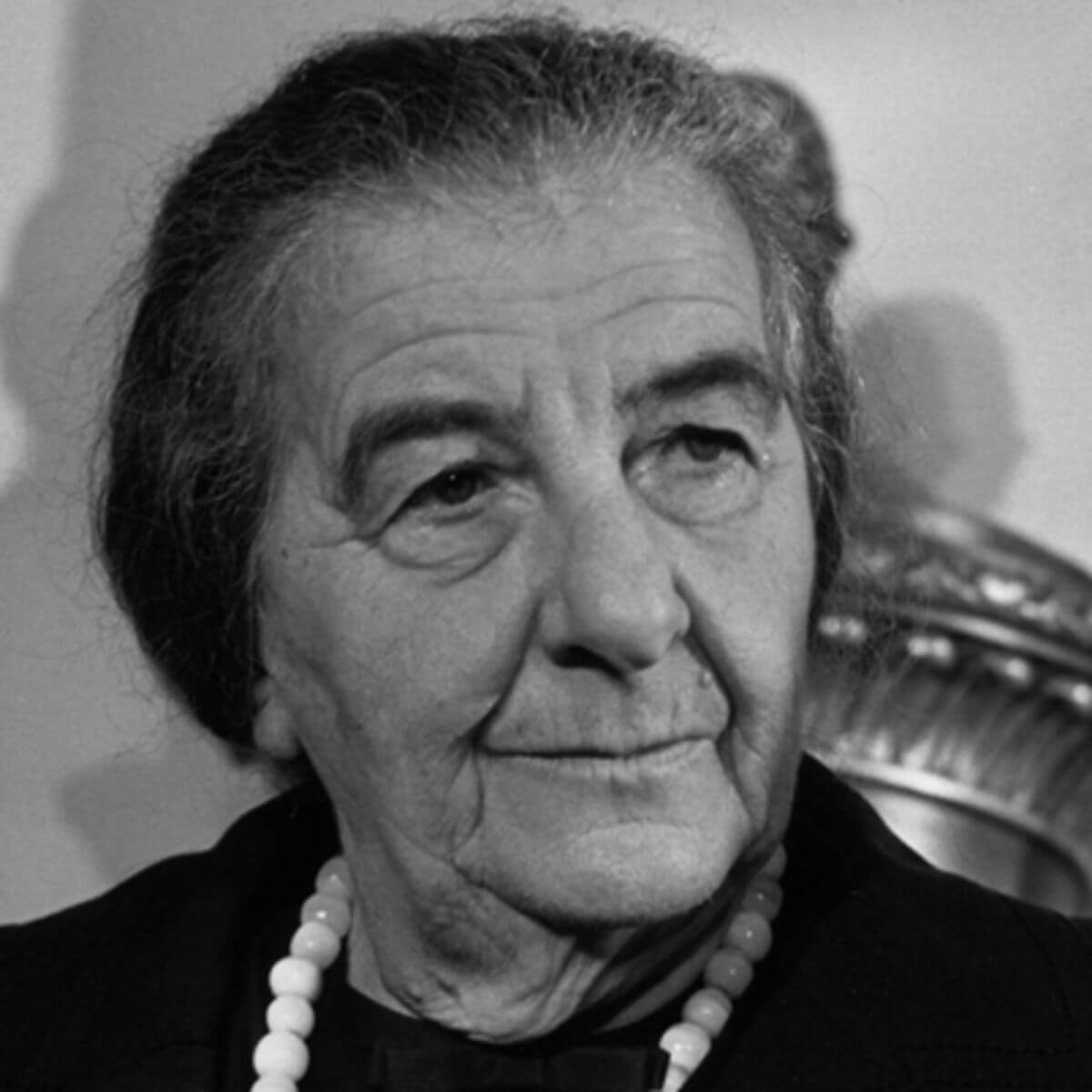.1 | 15 October 1973: "The IDF Has Broken An Egyptian Armoured Offensive" - Beginning of the Israeli Offensive
On the morning of Monday, 15 October, the headlines of the newspapers told of the impressive success of the IDF in the south. “The IDF has broken an Egyptian armoured offensive – 200 tanks were destroyed, 1,000 Egyptians were killed yesterday along the Suez Canal”, read the headline in “Davar”. This day marked the beginning of the third stage of the war – an attack on a wide front by the IDF in Sinai, aimed at striking a decisive blow at the Egyptian army to prevent a war of attrition.
In the early hours of the morning, the war cabinet held a discussion with the COGS about Jordanian involvement in the war, as described in the bureau journal. The Jordanian brigade sent by Hussein to the Syrian front was on the move and nearing the battle front. There was general agreement not to attack the force unless it crossed a particular topographic line. Later that day information was received that the Jordanian brigade, under Iraqi command, was approaching the front and would probably soon enter the fighting. This information was sent to the Americans, with a clarification that, in any case, Israel would not attack Jordan itself (See: Telegrams Nos. VL/914, 915).
However, the main focus of attention was on the south and on preparations for the Israeli counter-attack. At 19:45 Lior reported to Golda “Now it’s really begun”. The IDF had started an attack in order to cross the Suez Canal and capture a bridgehead on its western bank. About an hour later, Golda reported on the developments to the head of the opposition, Begin and to the chairman of the Foreign and Defence Committee of the Knesset, Haim Zadok. At 21:30, Deputy COGS Tal arrived to report. He said that at present the action in the south, which was codenamed “Operation Abirei Lev” (Valiant), was progressing as planned; and the plan was that the next day there would be “four-five of our bridges on the Canal”. In the north the IDF had had a very successful day, and had hit many Iraqi tanks (For the full minutes of the consultation, see: Cabinet Document No. 21).
By then, 18 Phantom planes had already reached Israel by direct flight, 14 US cargo planes had landed and an additional 18 were on their way, and the supply of the rest of the arms was progressing rapidly. The same day it was also learned that the US would soon begin sending tanks from Europe and would even fly in tanks in huge planes. Within several days an airlift would begin on aircraft carriers that would make it possible to transport dozens of Skyhawk planes to Israel (See: Telegram No. LV/121). The telegrams from Washington show that the Americans intended to supply arms to Israel “on an unprecedented scale and at an unprecedented speed” (See Telegrams Nos. LV/125, 126).
All this and more was discussed at a government meeting that met at 22:00. It began with a report by Tal, who repeated the optimistic reports on the situation in the north, and described the beginning of the operation to cross the Canal. Having received an update from Elazar, Tal said that the operation was going well, although progress was a little slower than planned. It was impossible to know what the results would be, since this was “the biggest and most complicated operation the IDF had ever carried out”. The ministers’ questions expressed the scepticism felt in previous discussions on crossing the Canal. Tal explained the change that had occurred following the failure of the Egyptian attack, and said that this was the first time since the beginning of the war that the initiative had passed to the IDF on the Egyptian front, because “until yesterday they had the initiative, and they dictated what cards we played”. Golda Meir then presented a report on the Jordanian force and on the great improvement in transporting arms and equipment from the US. American Patton M60 tanks would be sent to Israel from Europe (For the full minutes of the meeting, see: Government Document No. 16).
Ten days after the outbreak of the fighting, the prime minister began to come out of her self-imposed seclusion. On 15 October Golda visited wounded soldiers in Tel Hashomer Hospital, and the following day she planned to go to Jerusalem, for the first time since 6 October, to make a statement to the Knesset. In preparation for her appearance, Galili talked to Dinitz and telegrams were exchanged about the references to the Administration in her statement. On the one hand, it was necessary to express gratitude for the American help; but on the other, caution was advised in order not to harm the delicate relationship of the US with the Arabs. Dinitz showed Kissinger the proposed text, and Kissinger requested that an entire section relating to him be left out (See: Telegrams Nos. LV/129, /131, partially in English, 132. For the full entry of that day, see: the Prime Minister’s Bureau Journal, 15.10.73).
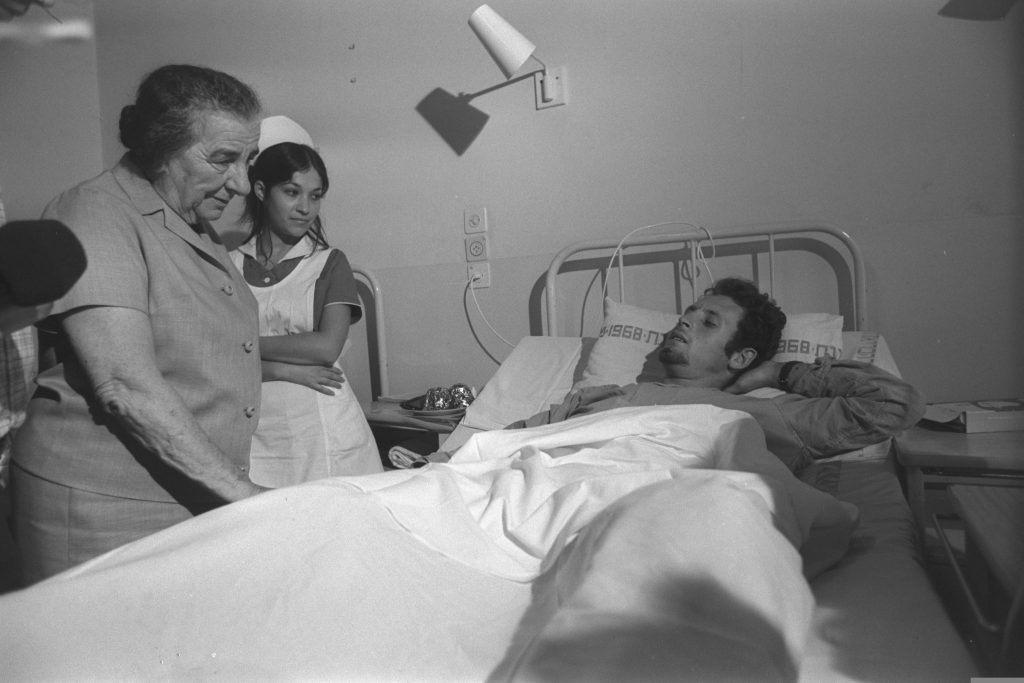
PM. Golda Meir visiting a wounded soldier in Tel Hashomer hospital, 15 October 1973. Photograph: Chananiah Herman, GPO.

